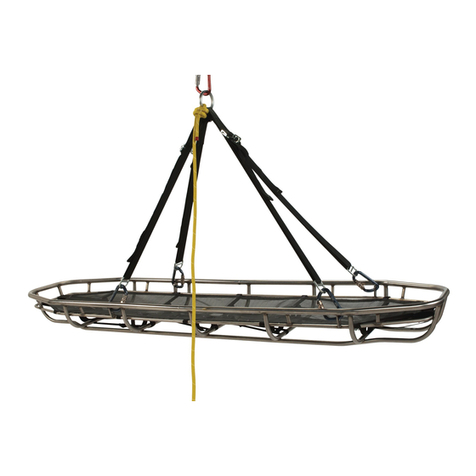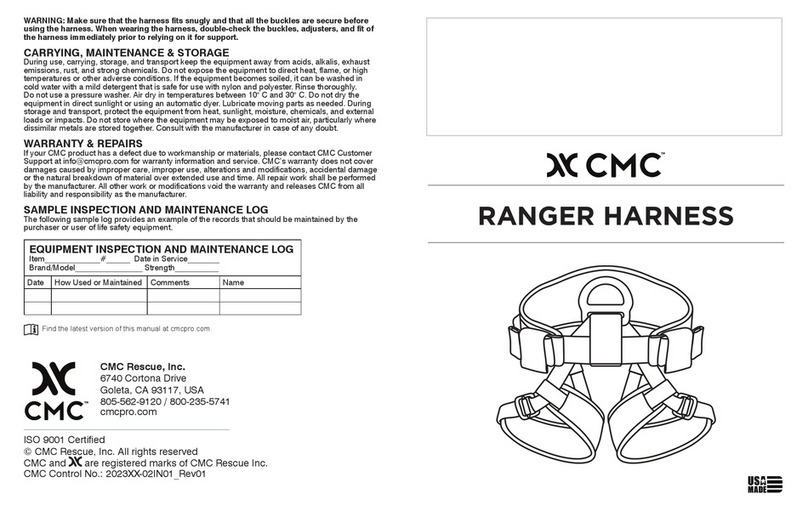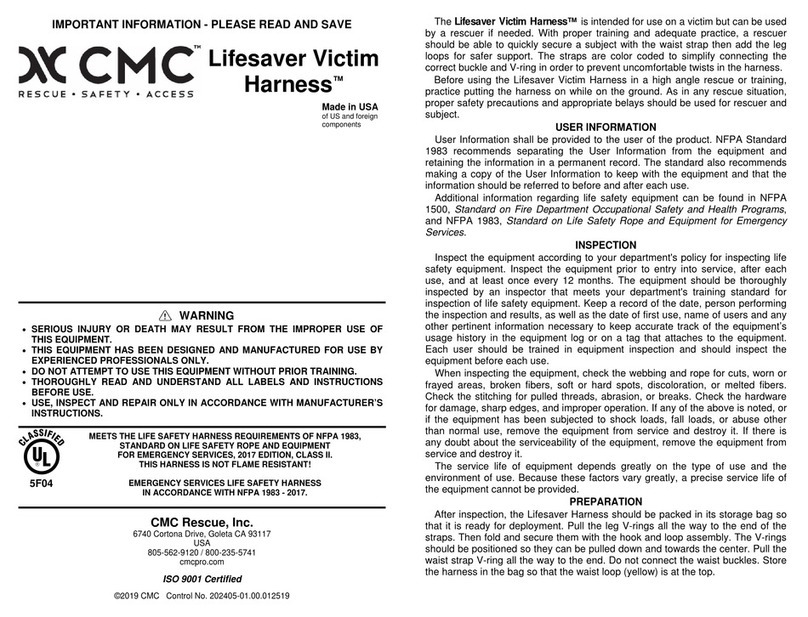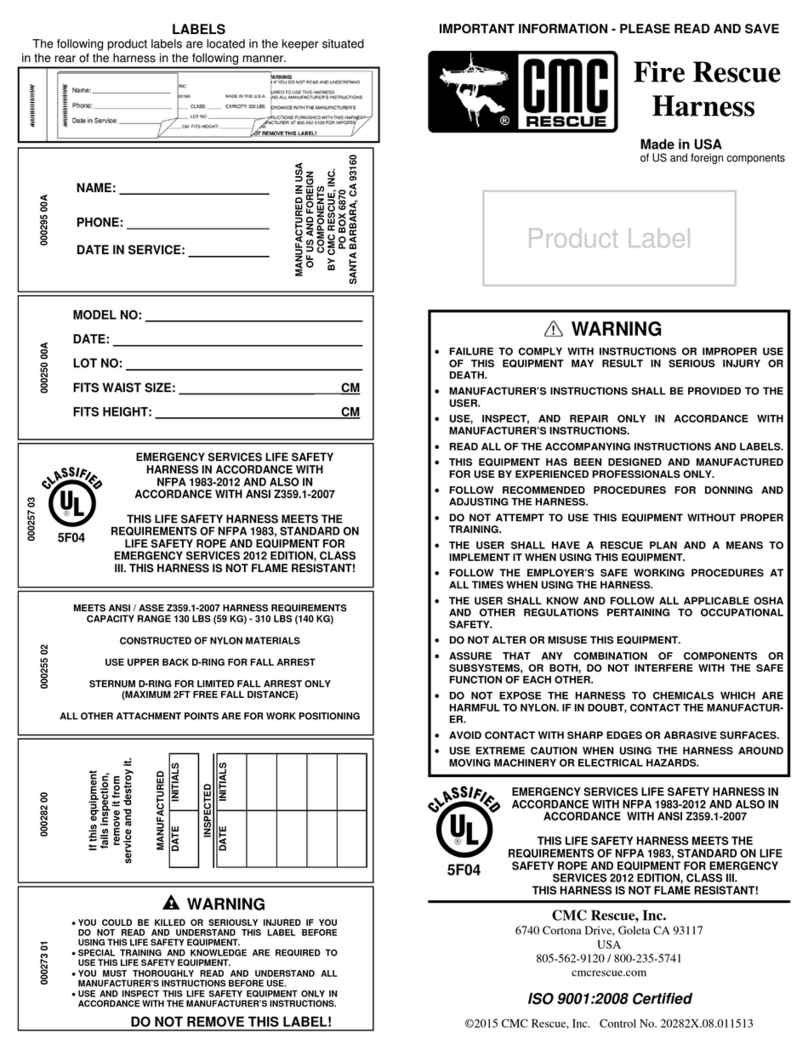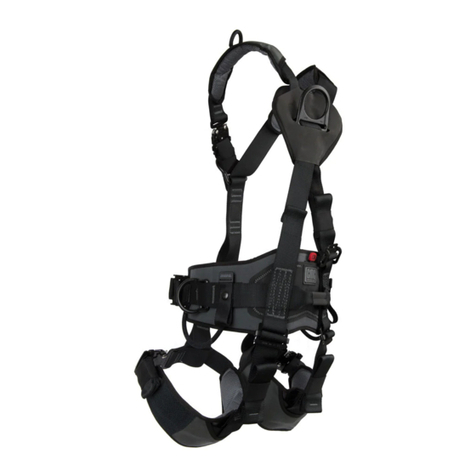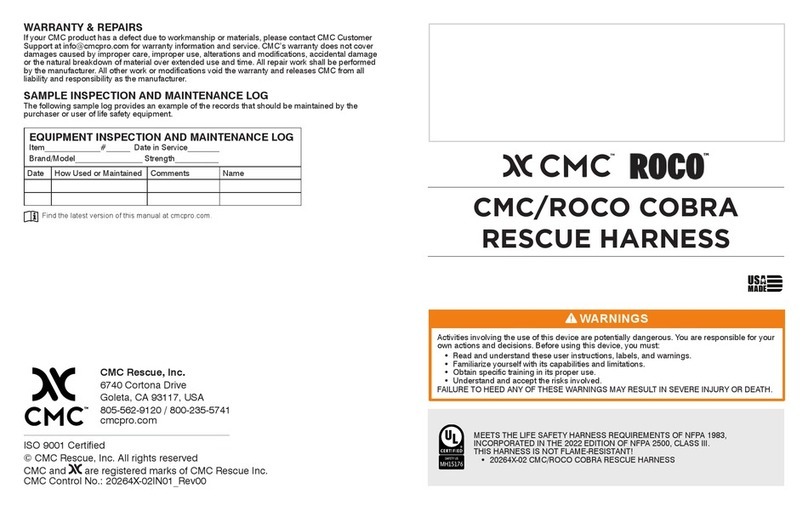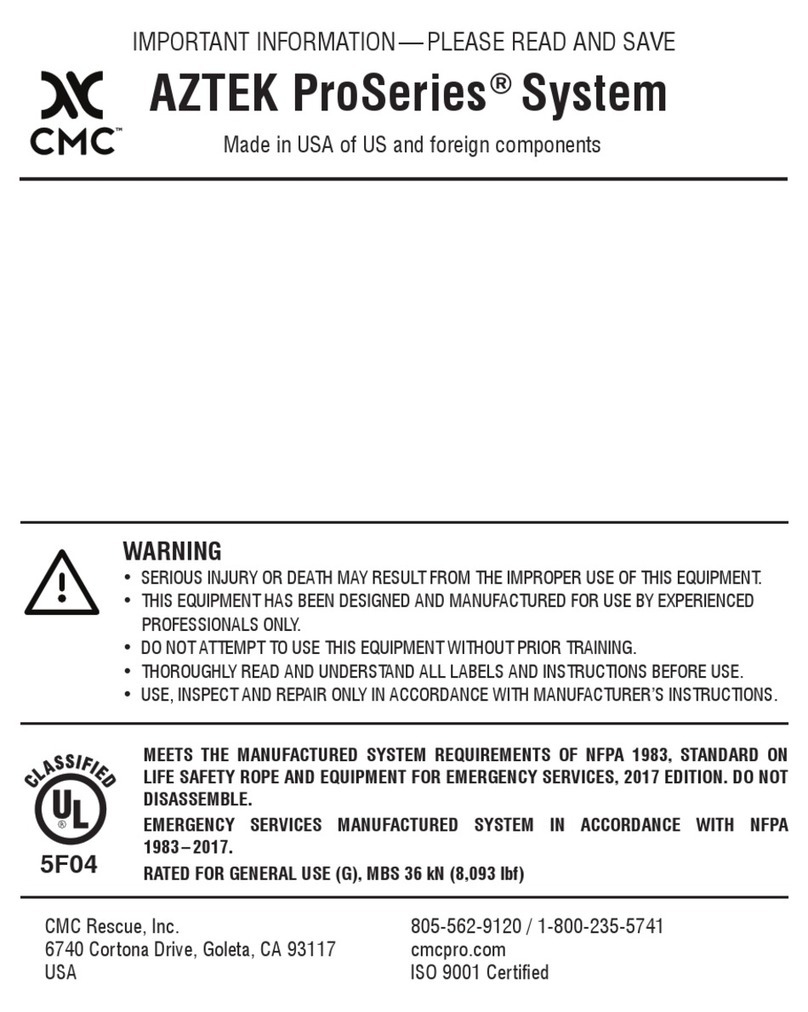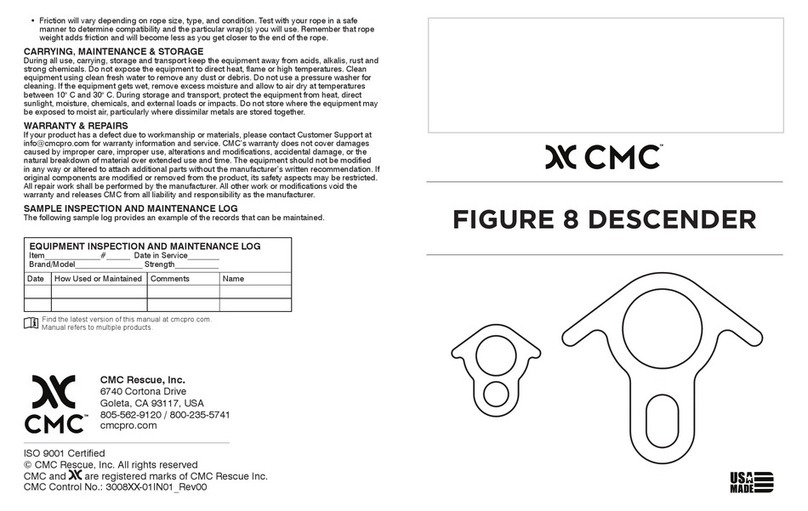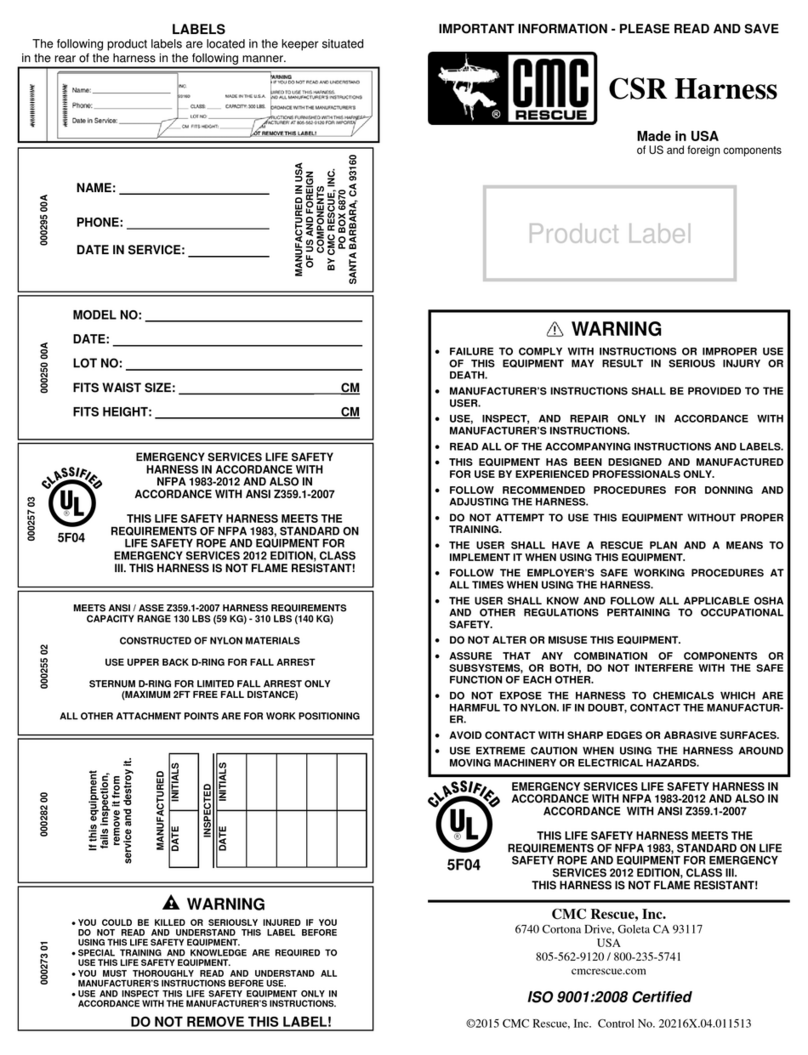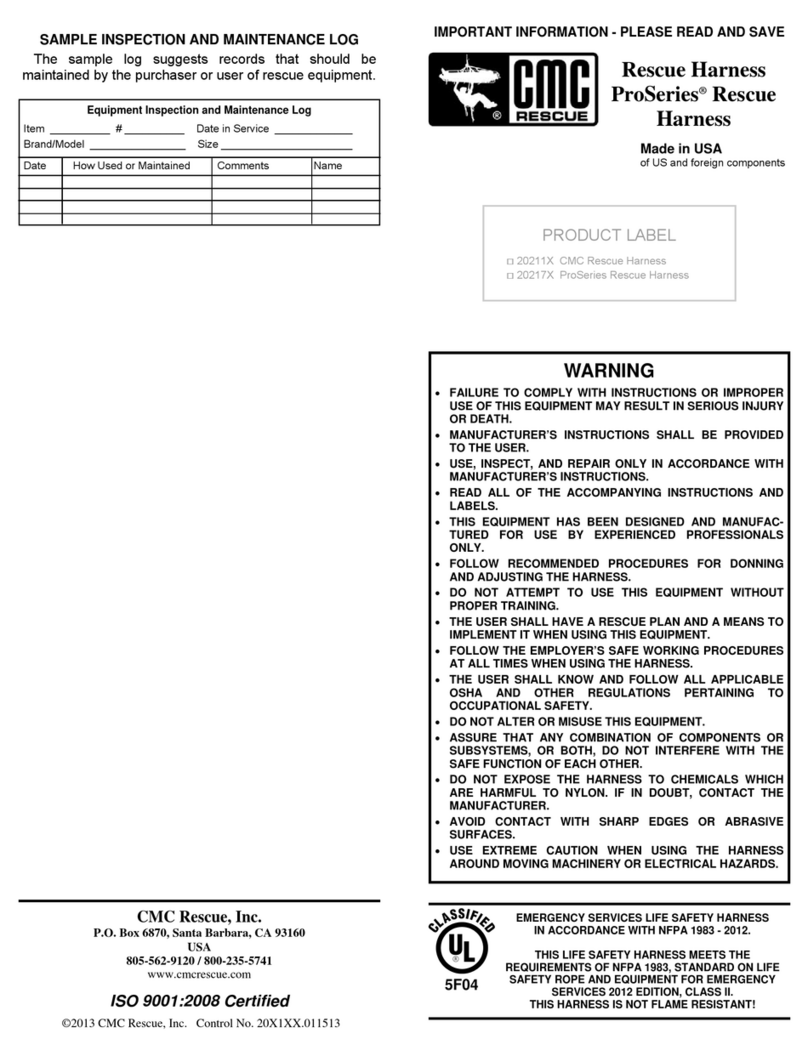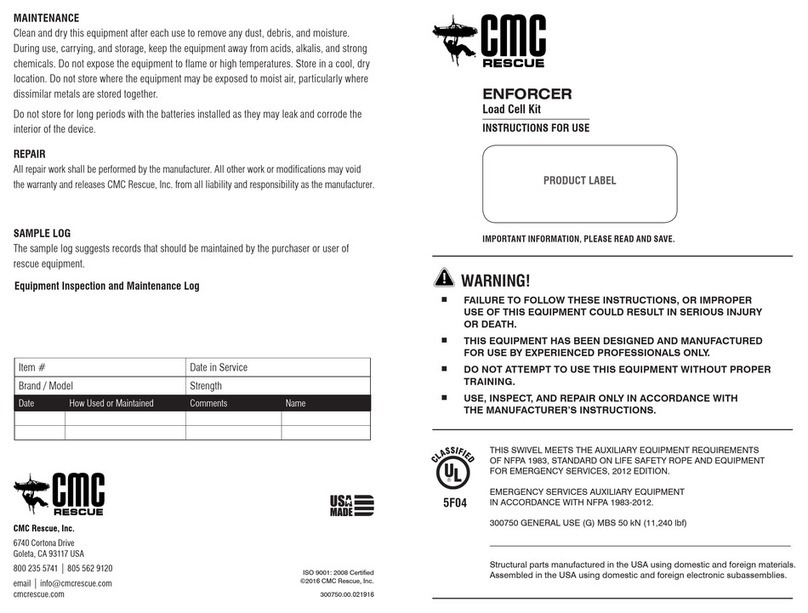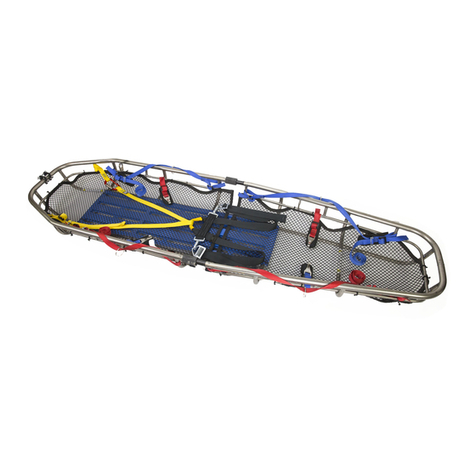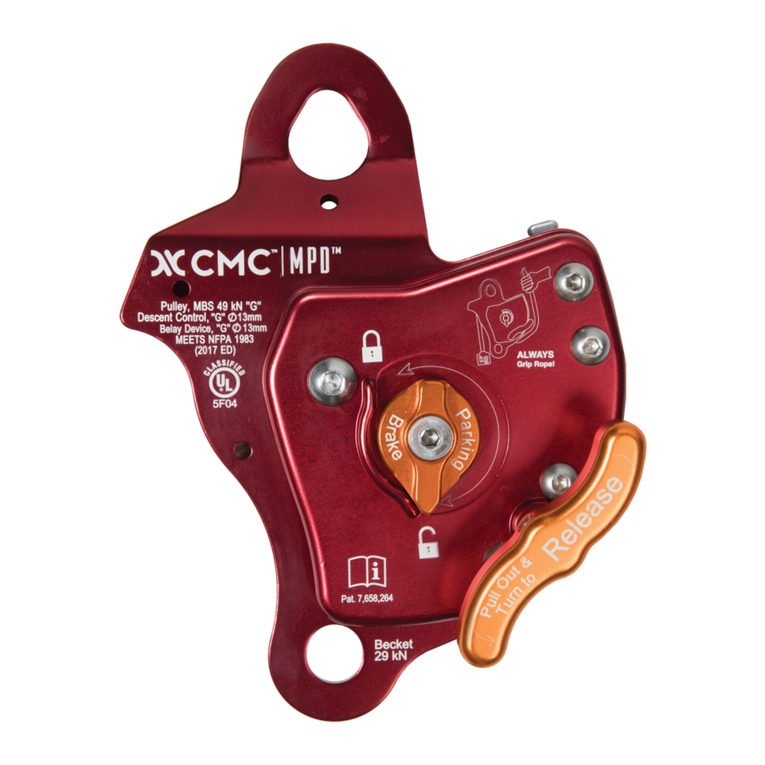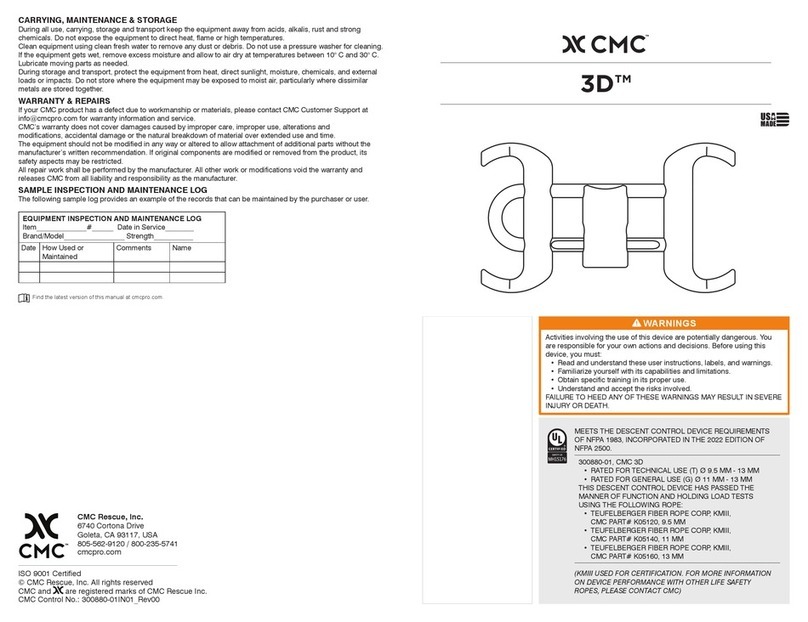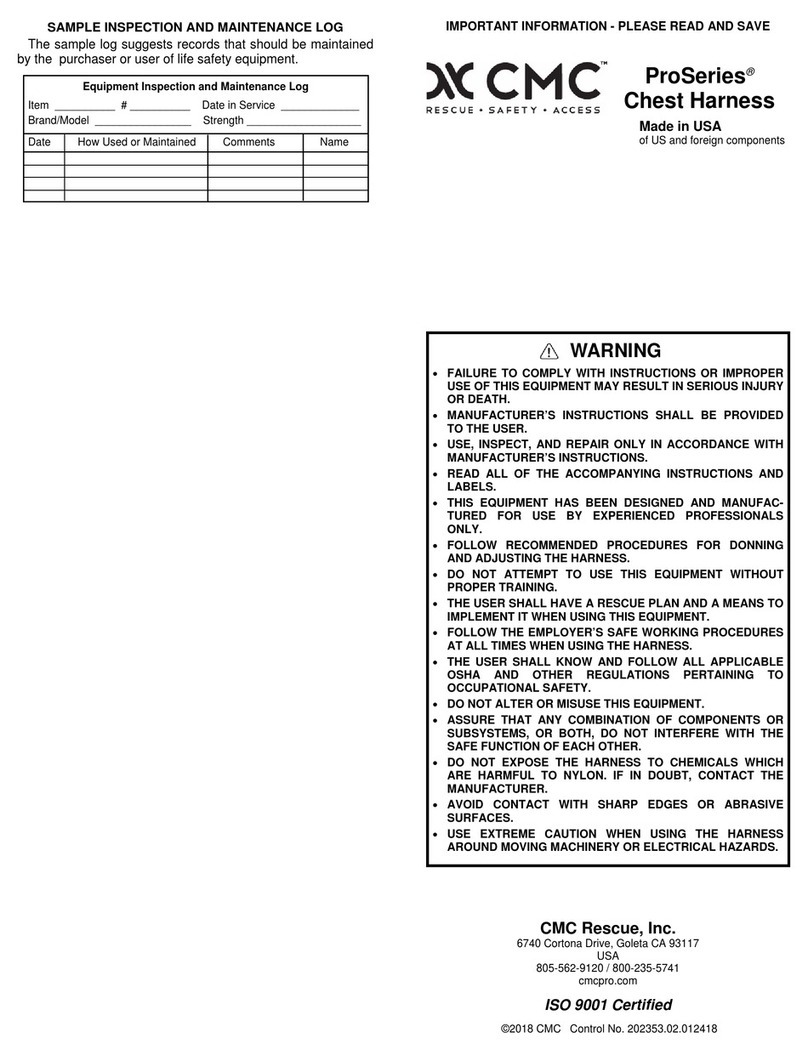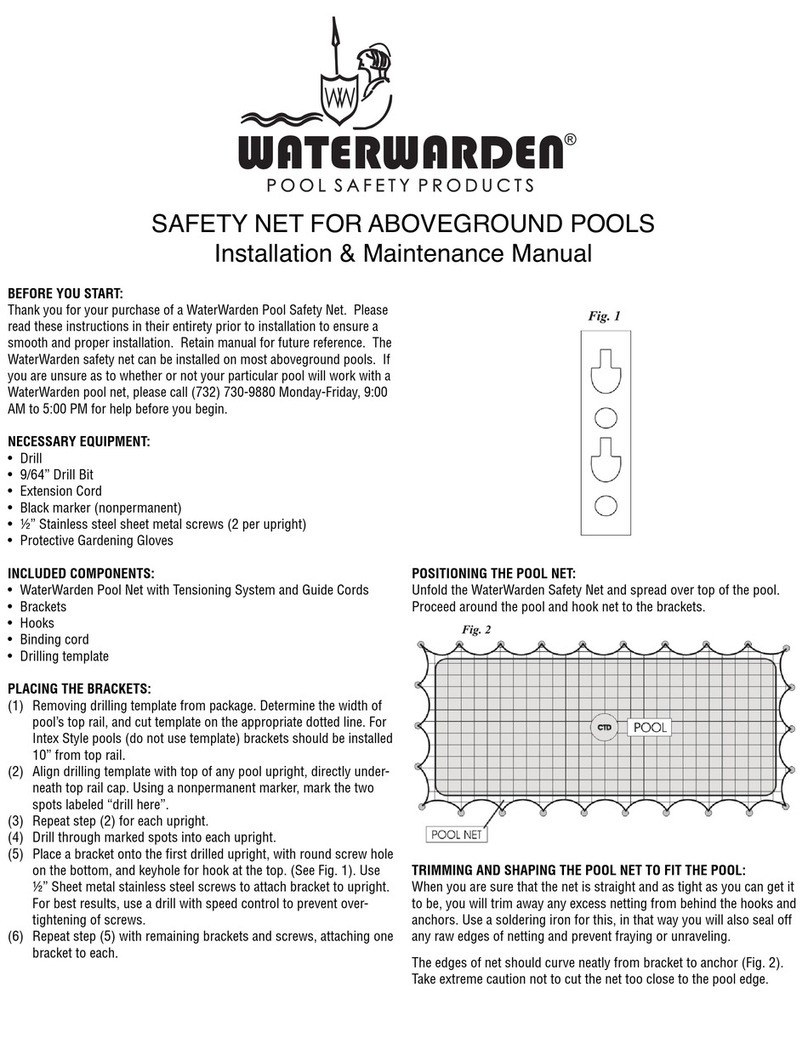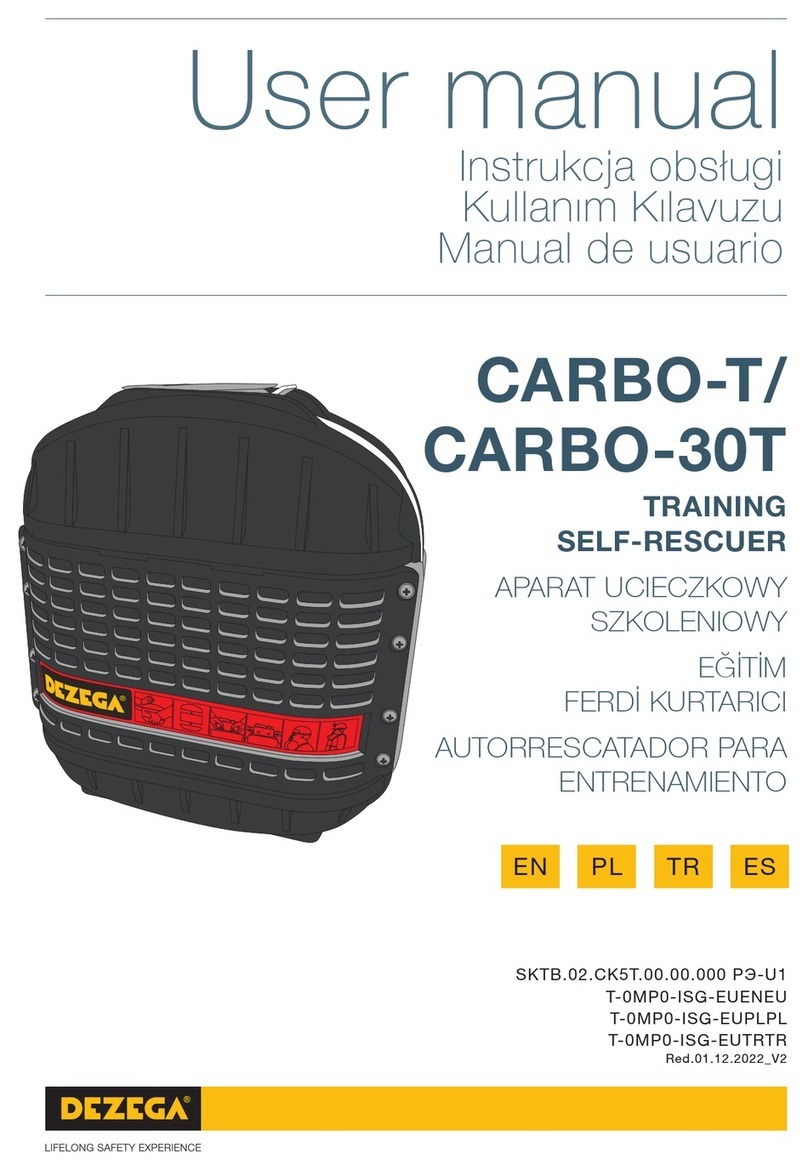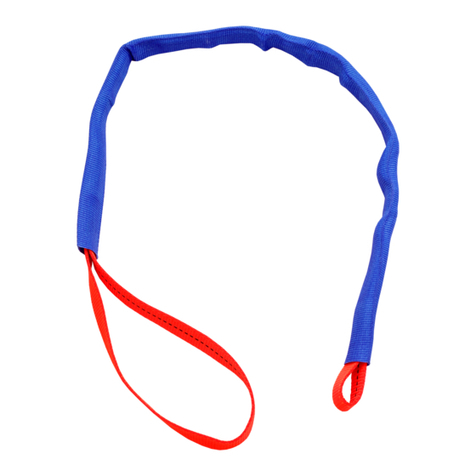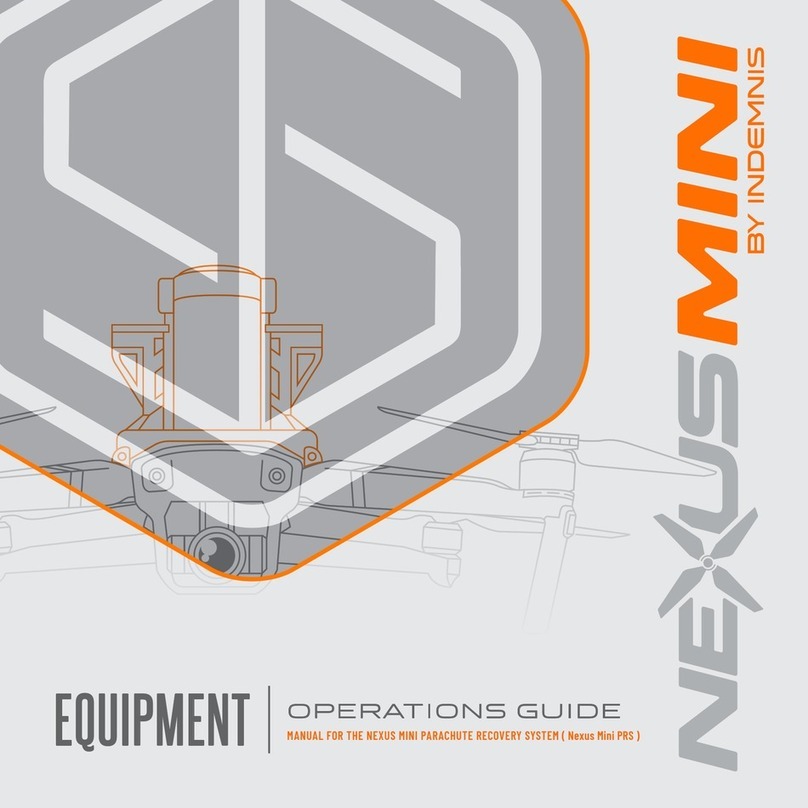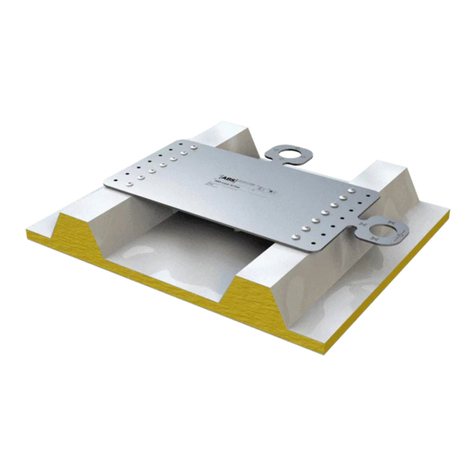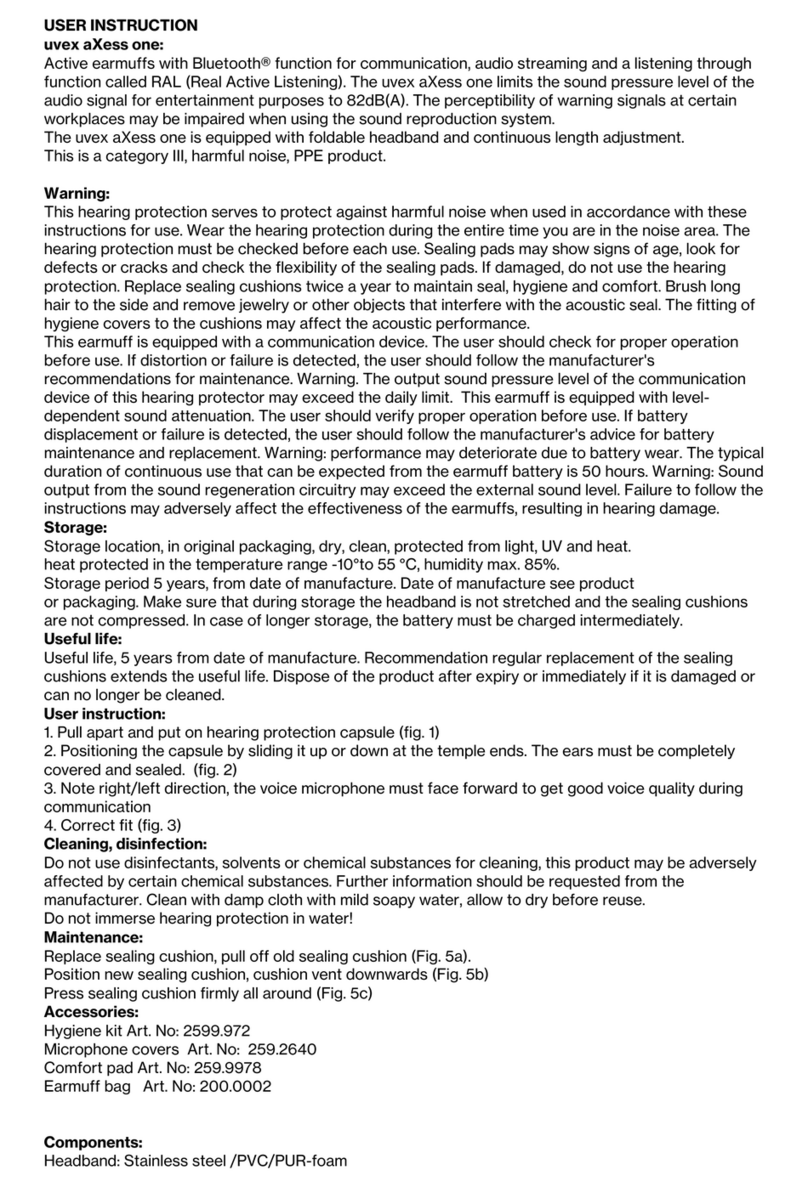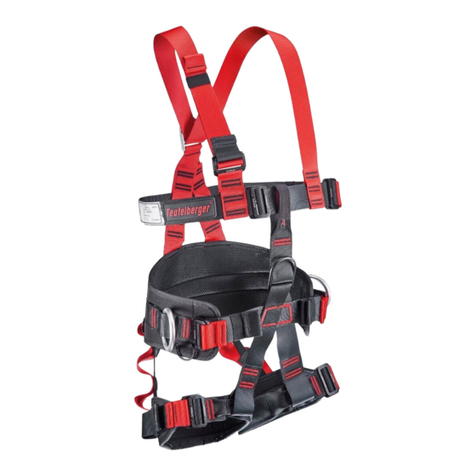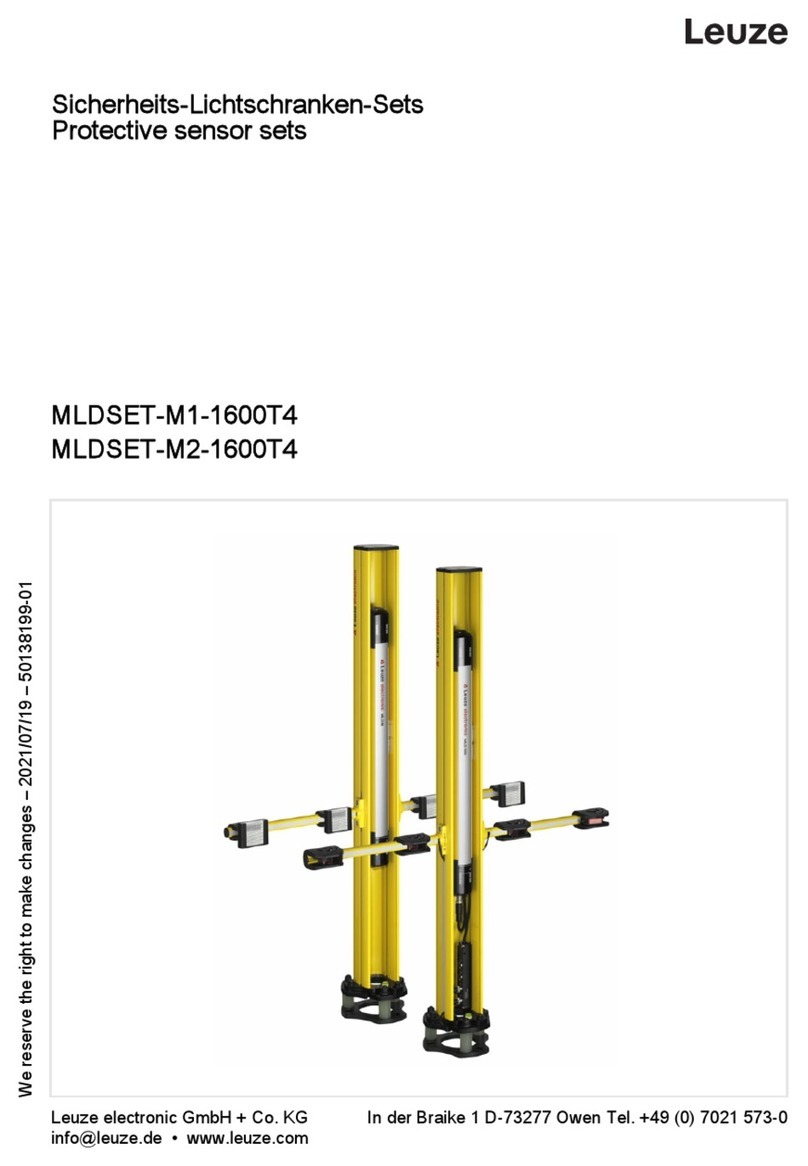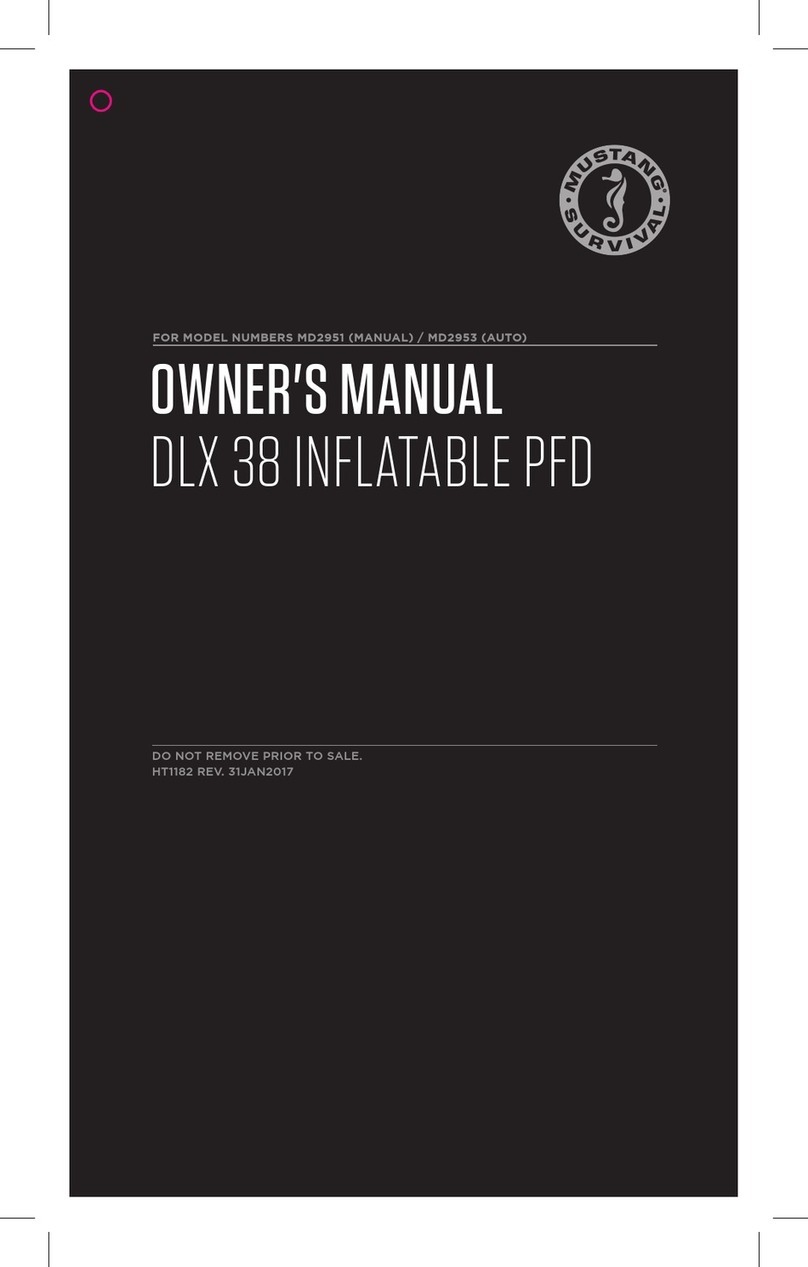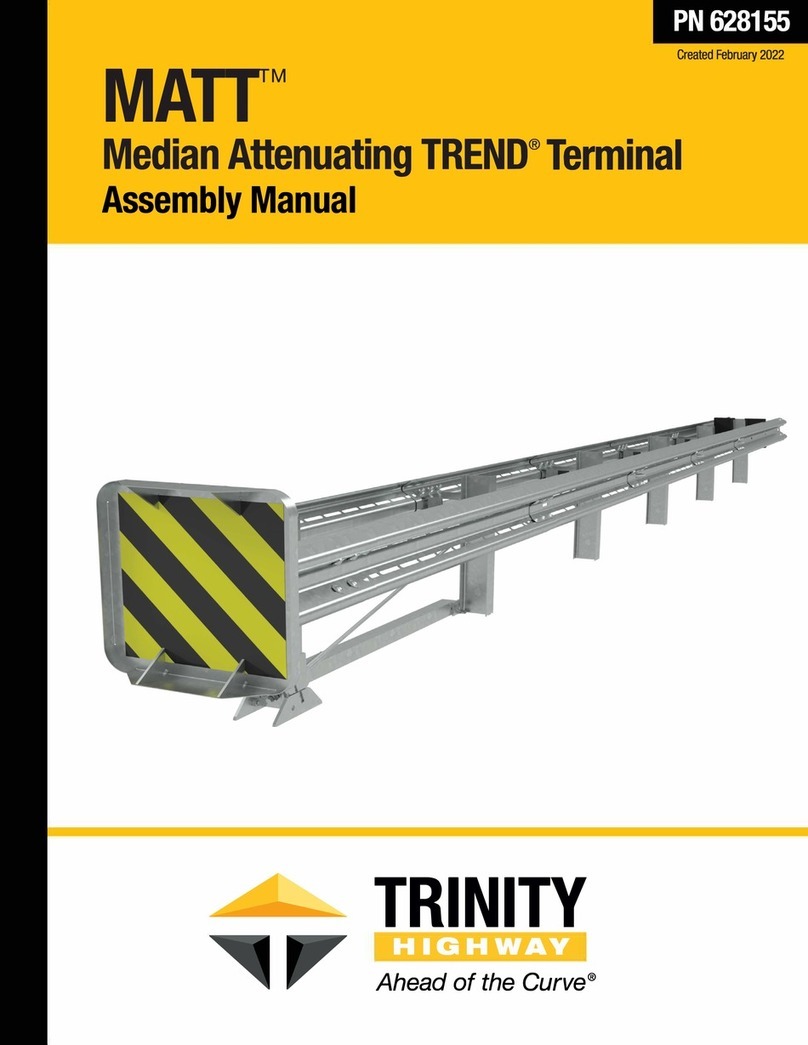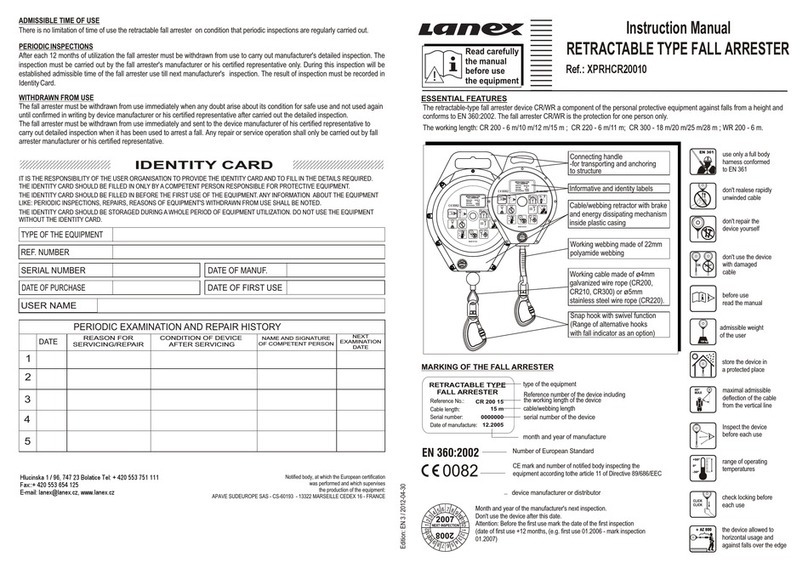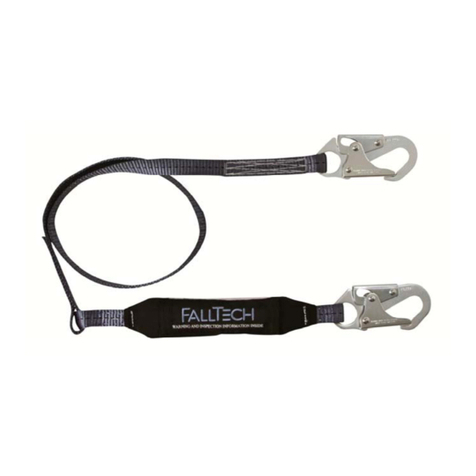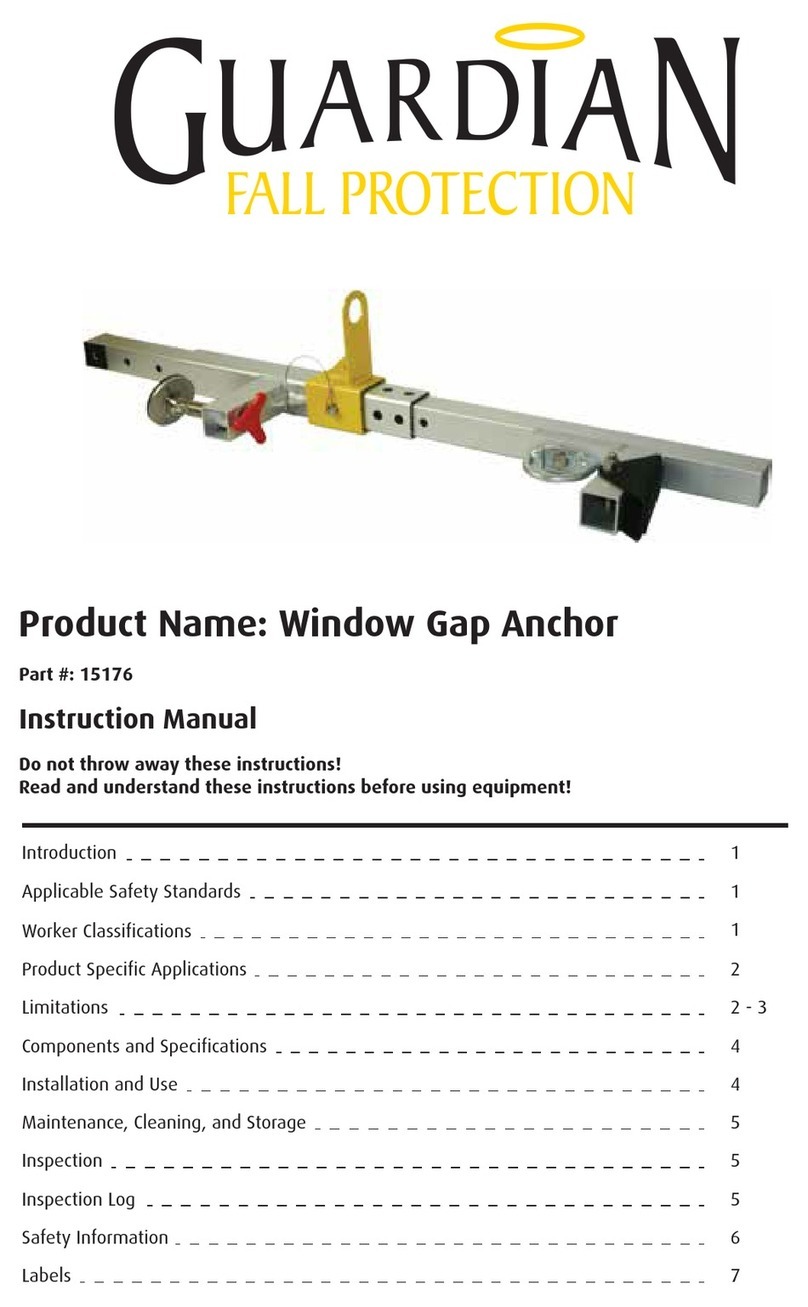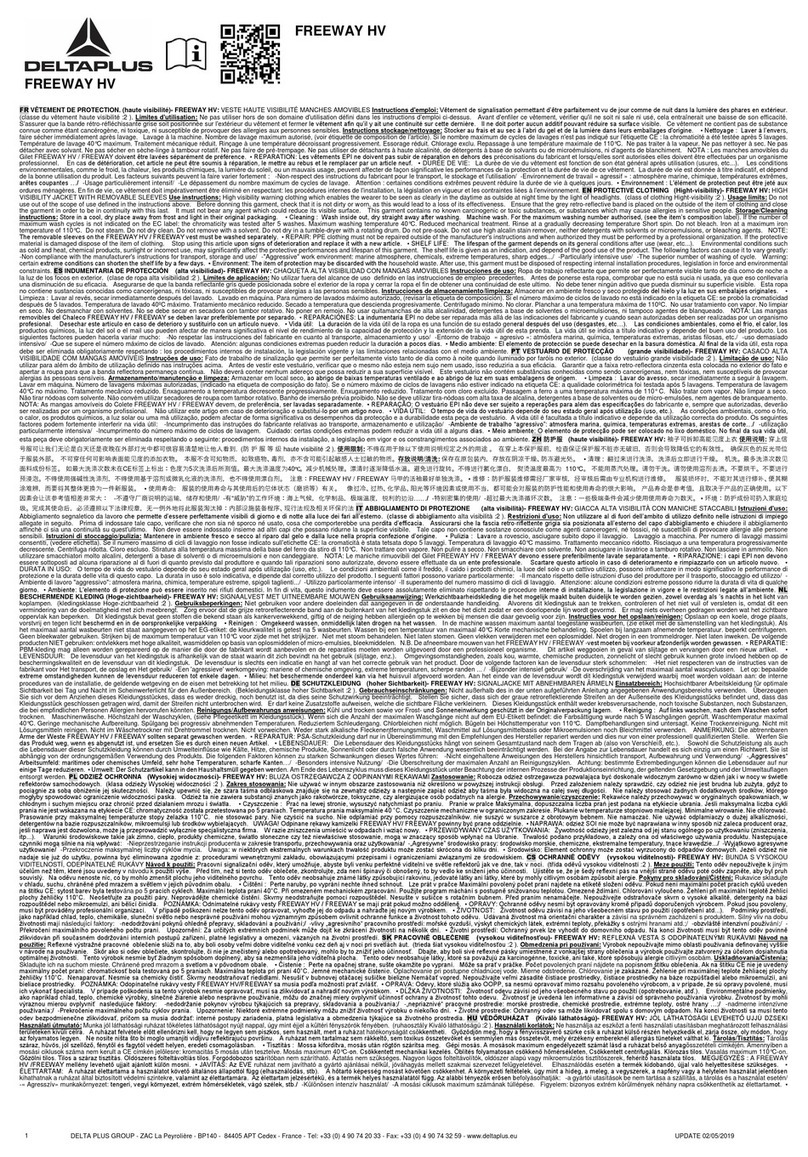
• RATED FOR TECHNICAL USE (T) Ø 9.5mm - 13mm, MBS 13.5 kN (3,034 lbf)
• RATED FOR GENERAL USE (G) Ø 13mm, MBS 22 kN (4,946 lbf)
5F04
IMPORTANT INFORMATION - PLEASE READ AND SAVE
Made in USA
of US and foreign components
THIS DESCENT CONTROL DEVICE MEETS THE AUXILIARY EQUIPMENT
REQUIREMENTS OF NFPA 1983, STANDARD ON LIFE SAFETY ROPE AND
EQUIPMENT FOR EMERGENCY SERVICES, 2012 EDITION.
EMERGENCY SERVICES AUXILIARY EQUIPMENT
IN ACCORDANCE WITH NFPA 1983 – 2012.
3D
PRODUCT LABEL
300880 - 3D
CMC Rescue, Inc.
6740 Cortona Drive, Goleta CA 93117
USA
805-562-9120 / 800-235-5741
cmcrescue.com
ISO 9001 Certified
©2016 CMC Rescue, Inc. Control No. 300880.01.080116
Equipment Inspection and Maintenance Log
Item __________ # __________ Date in Service _____________
Brand/Model ________________ Strength ___________________
Date How Used or Maintained Comments Name
USER INFORMATION
User Information shall be provided to the user of the product. NFPA Standard 1983 recommends
separating the User Information from the equipment and retaining the information in a permanent
record. The standard also recommends making a copy of the User Information to keep with the
equipment and that the information should be referred to before and after each use.
Additional information regarding life safety equipment can be found in NFPA 1500, Standard on
Fire Department Occupational Safety and Health Programs, and NFPA 1983, Standard on Life
Safety Rope and Equipment for Emergency Services.
USE
The 3D Descender allows the user to control a wide range of loads by varying the path of the
rope through the device as well as increasing and decreasing the space between the bars to control
friction.
It is important that before commencing a lowering operation all bars and horns be engaged and
the descender be securely tied off. After loading the system, slowly untie the descender and begin
with the maximum friction obtained by having the rope running over at least two of the horns. See
opposite page for rigging diagrams.
When rigging the descender, always make sure that the center bar is securely engaged to
the frame and the locking button is fully extended to the end of the center bar. The center bar
should not disengage from the frame without depressing the locking button. To prevent
roll-out, only use locking carabiners.
INSPECTION
Inspect the equipment according to your department's policy for inspecting life safety equipment.
The equipment should be thoroughly inspected after each use by an inspector that meets your
department's training standard for inspection of life safety equipment. Record the date of the
inspection and the results in the equipment log or on a tag that attaches to the equipment. Each
user should be trained in equipment inspection and should inspect the equipment before each use.
Inspect the equipment for cracks, sharp edges, dents, corrosion, burrs or excessive wear. Minor
nicks or sharp spots may be smoothed with emery cloth. If any of the above is noted, or if the
equipment has been subjected to shock loads, fall loads, or abuse other than normal use, remove
the equipment from service and destroy it. If there is any doubt about the serviceability of the
equipment, remove the equipment from service and destroy it.
The service life of equipment used for rescue depends greatly on the type of use and the
environment of use. Because these factors vary greatly, a precise service life of the equipment
cannot be provided.
MAINTENANCE
Clean and dry this equipment after each use to remove any dust, debris, and moisture. During
use, carrying, and storage keep the equipment away from acids, alkalis, and strong chemicals. Do
not expose the equipment to flame or high temperatures. Store in a cool, dry location. Do not store
where the equipment may be exposed to moist air, particularly where dissimilar metals are stored
together.
REPAIR
All repair work shall be performed by the manufacturer. All other work or modifications will void
the warranty and releases CMC Rescue, Inc. from all liability and responsibility as the manufacturer.
SAMPLE LOG
The sample log suggests records that should be maintained by the purchaser or user of rescue
equipment.
THIS DESCENT CONTROL DEVICE HAS PASSED THE MINIMUM BREAKING
STRENGTH AND HOLDING LOAD TEST USING THE FOLLOWING ROPE:
TEUFELBERGER FIBER ROPE CORP, KMIII, CMC PART# K05120, 9.5mm.
TEUFELBERGER FIBER ROPE CORP, KMIII, CMC PART# K05160, 13mm.
(KMIII USED FOR CERTIFICATION. FOR INFORMATION ON PERFORMANCE WITH OTHER LIFE SAFETY
ROPES, PLEASE CONTACT CMC RESCUE)
WARNING
• SERIOUS INJURY OR DEATH MAY RESULT FROM THE IMPROPER USE OF THIS
EQUIPMENT.
• THIS EQUIPMENT HAS BEEN DESIGNED AND MANUFACTURED FOR USE BY
EXPERIENCED PROFESSIONALS ONLY.
• DO NOT ATTEMPT TO USE THIS EQUIPMENT WITHOUT PRIOR TRAINING.
• CMC RESCUE RECOMMENDS ALWAYS USING AN INDEPENDENT OR SELF-BELAY
WHEN WORKING ON ROPE.
• THOROUGHLY READ AND UNDERSTAND ALL LABELS AND INSTRUCTIONS BEFORE
USE.
• USE, INSPECT AND REPAIR ONLY IN ACCORDANCE WITH MANUFACTURER’S
INSTRUCTIONS.
